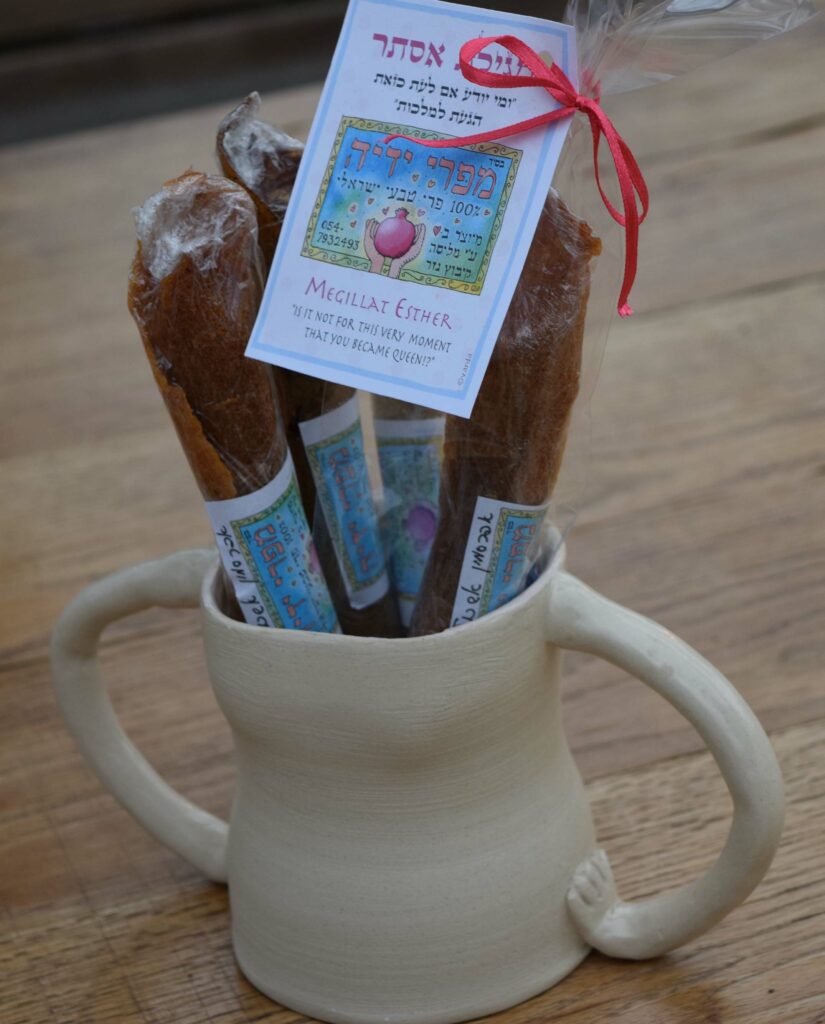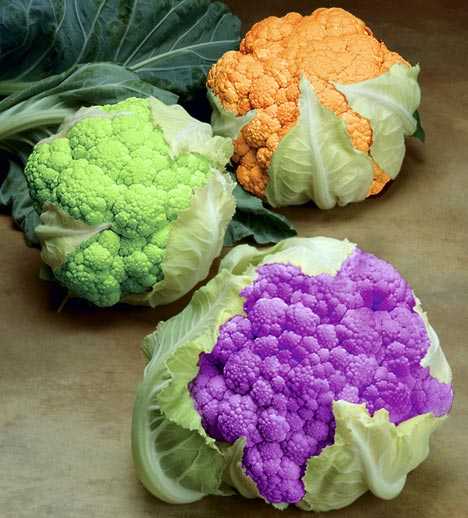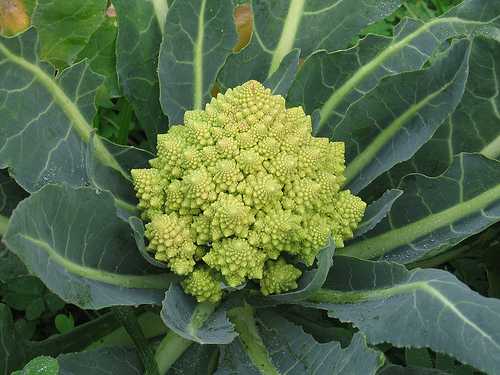In honor of Purim, Melissa of Mipri Yadeha is offering delectable Scrolls of Esther fashioned from fruit-leather. These Purim delights come in an array of flavors and are packaged majestically.
You can add them to your order via our internet order system, at only 10 NIS per scroll.
__________________________________________________
The Power of the Flower
This week we will continue to tell cauliflower tales, beginning with praise for its health and nutritional values. As a member of the Cruciferae family, cauliflower is packed with cancer-fighting components (along with its relatives the green and purple cabbage, broccoli, kale, kohlrabi, arugula, rashad, mustard greens, Brussels sprouts, Chinese cabbage, turnips, and radishes). The primary anti-cancer elements are sulforaphane and an indole compound.
Interestingly, sulforaphane is produced in the vegetables only when they are cut or bitten into, i.e., when an animal consumes them. Sulforaphane is an efficient antioxidant, but it also raises the level of certain protective enzymes in the body, which act as “policemen” that capture the cancer-causing elements and send them into the bloodstream to be washed out of the body. These enzymes are also excellent antioxidants, and unlike regular antioxidants, they are not consumed while they work. The indole compound in the cauliflower and its relatives protects against breast cancer by influencing the estrogen hormone (in various forms this hormone can actually encourage the development of breast cancer). On the one hand, the indole compound activates the production of less active estrogen, the kind that does not encourage breast cancer, while on the other hand it reduces the production of a more harmful estrogen type. In order to reduce the threat of cancer, it is recommended to consume at least 2-3 weekly servings of vegetables from the Cruciferae family.
In addition to the photochemicals it shares with its powerful family, the cauliflower contains other photochemicals such as phytosterols and glucaric acids that contribute to the reduction of cholesterol levels in the blood. Another cholesterol fighter comes from the dietary fibers so rich in the cauliflower, which aid digestion and prevent constipation as well as slowing down the absorption of sugar and cholesterol from food. Of course, we cannot forget the venerable Vitamin C! One hundred grams of cooked cauliflower contain half of the daily-recommended portion of vitamin C.
The Cruciferae family has another connection to cancer prevention, one that is unique because it once again indicates why nature is so much more complex than simplified classifications of “good” “bad” “useful” and “harmful.” A perfect example is one of the family’s most famous pests: the cabbage butterfly. The female butterfly lays her eggs on the Cruciferae plants, and hungry caterpillars feed from the leaves of this prevalent family. They also swallow very spicy matter found in the leaves (mustard glycocids) and isolate it in their bodies. When the caterpillar grows, it uses this matter as a defense mechanism: if attacked by a predator insect, the caterpillar secretes concentrated glycocids which cause an irritation in the mouth, esophagus and stomach of the attacker. When it is pupated, the cabbage butterfly defends itself using an interesting toxin: pierison. This toxin destroys cells by breaking their DNA. All the cells die and renew themselves, except for cancerous cells. Research has indicated that pierison caused nine types of cancerous cells to “commit suicide.” Thus, indirectly, by hosting the caterpillar that tortures it and eats its leaves, the martyred Cruciferae family takes an important role in battling cancer.
The cauliflower we know and love is white, and I told you how much effort we put into keeping it that way. But there are cauliflowers that come in such varying colors as purple, orange (rich in beta carotene) and green:
And a weird-looking variety as well, bearing a resemblance to a UFO:
Despite their different shapes and florescent colors, these cauliflower varieties are not the product of genetic engineering. I grew such cauliflowers in an organic field in California. They were developed in the traditional breeding method of selecting plants of various types and crossing them with plants of other types until a colorful one is produced. Creation of this kind of species usually takes years, even decades. The result is amazing (somewhat psychedelic). There are those who shy away from the stark “unnatural” colors (which remain even after cooking, by the way); others delight in adding impressive new hues to the dinner table.
It is recommended to store any type of cauliflower in the refrigerator, wrapped in an unsealed plastic bag (the sulphur needs to escape, otherwise the cauliflower is tainted and rots), with the stem downwards in order to prevent accumulation of moisture on the inflorescence. Stored correctly, cauliflowers can keep for two to three weeks, but are tastiest during the first several days. Afterwards the sweetness subsides.
This week we bid farewell-for-now to Maya as she takes a break in preparation of her upcoming birth. Yochai, my brother and our Jerusalem delivery person, will fill in for her and assist Dror in the office. Thank you, Maya, and looking forward to good news. And welcome, Yochai!
Wishing you a great, sunny week (other than the pesky raindrops always there to challenge Tuesday’s Purim costumes…)
Alon, Bat Ami, Maya, Dror and the Chubeza team
__________________________
WHAT’S IN THIS WEEK’S BOXES?
* In season and in your boxes is lemon thyme (AKA citrus thyme). it is great as herbal tea and also to flavor cakes and sweets, but you can definitely use as an herb for cooking, here are some examples:
More recipes ideas and some info about lemon thyme
Basically, in any recipe that calls for lemon and thyme can use the lemon thyme for the thyme ingredient.
Monday: Scallions, kale/Swiss chard/spinach, tomatoes, celeriac/parsley root, fennel/kohlrabi, broccoli, cucumbers, parsley/coriander/lemon thyme, “baby” greens/lettuce, cauliflower/cabbage. Small boxes only: Garden peas/fava beans.
Large box, in addition: Leeks/green garlic, carrots, beets, artichoke/radishes
Wednesday: peas/fava beans, scalions, kale/spinach/Swiss chard, tomatoes, carrots/potatoes, lettuce, fennel/radish, cucumbers, broccoli, parsley/cilantro/lemon thyme, parsley root/celeriac.
Large box, in addition: leek/green garlic, beets, cabbage/cauliflower
And there’s more! You can add to your basket a wide, delectable range of additional products from fine small producers: flour, fruits, honey, dates, almonds, garbanzo beans, crackers, probiotic foods, dried fruits and leathers, olive oil, bakery products, pomegranate juice and goat dairy too! You can learn more about each producer on the Chubeza website. On our order system there’s a detailed listing of the products and their cost, you can make an order online now!



